KAMEWARI-YAMA
Legendary location next to a quaint Onsen (hot spring) resort along the Oguni River in Mogami Town
Jump to My Guide to Hiking Kamewari-yama
Kamewari-yama is famous for:
- Location featured in the famous Gikeiki, The Chronicles of Yoshitsune
- Semi Onsen, an old Hot Spring Resort
- Kamewari Koyasu Kan’on, a shrine dedicated to safe childbirth
- Kamewari Oku-no-in Inner Sanctum where Yoshitsune's son Kamewakamaru was born
- Great 360° views to many of the Mogami region’s famous peaks including the Kamuro Renpo (alps)

The familiar scent of sulphur fills your nostrils as you stroll along the narrow road dwarfed either side by the giant family-run Ryokan, or should I say, formerly family-run Ryokan. Judging by the sheer size of the Ryokan, Semi Onsen must have been popular in its heyday. Unfortunately, its heyday is quite obviously long gone.
The Aging Ryokan of Semi Onsen
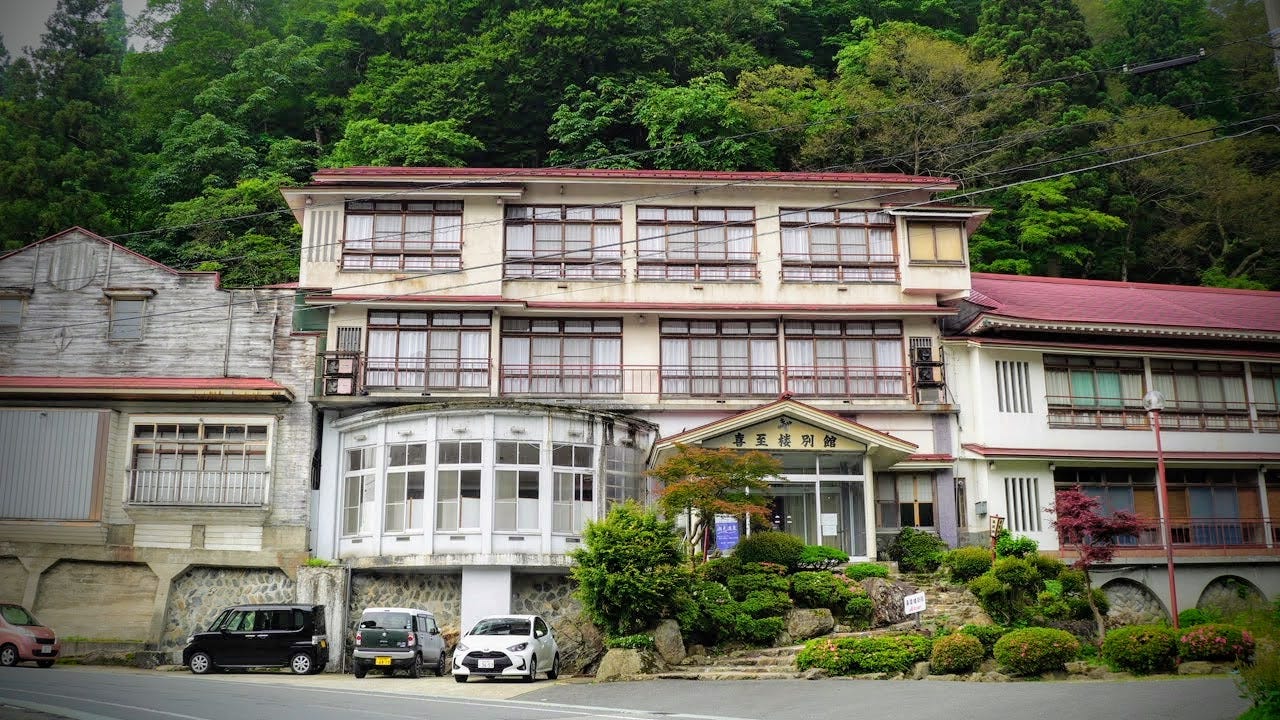
The rusted window frames, peeling wooden panels, and signs that needed a coat of paint half a century ago make even the newer Ryokan seem run-down. Not to mention, the severe lack of people out and about show a town that has all but seen better days. Although some of the Ryokan are straight out of Spirited Away, I wouldn’t be surprised to learn that they haven’t been repaired since that film was released over 20 years ago.
Which is a huge shame.
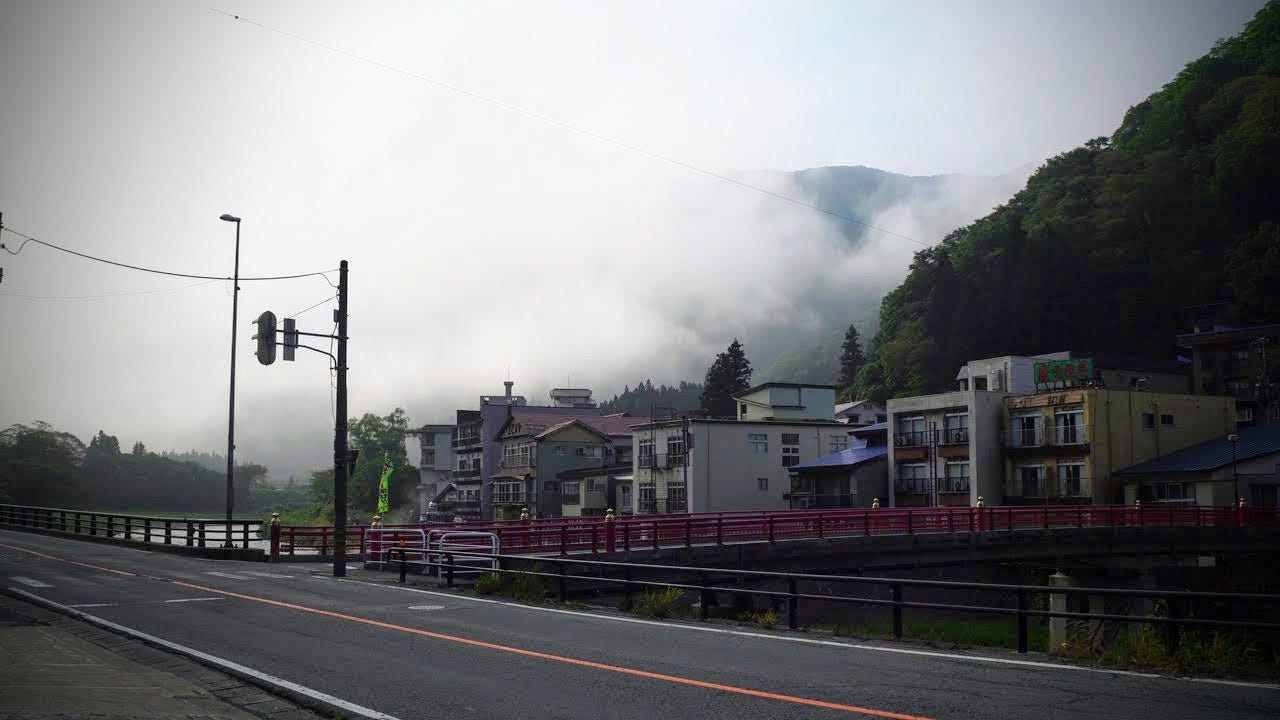
Semi Onsen is bursting with potential. A decent coat of paint and a modern booking system and this quaint town could easily relive its heyday. If done well, it could even rival the nearby Ginzan Onsen.
It’s also a shame because right next to Semi Onsen is a very important place in Japanese folklore, Kamewari-yama, Mt. Kamewari.
Kurosawa Akira and Kamewari-yama

Once through the tiny onsen town and across the characteristic red bridge, follow along the river until you reach the Koyasu-Kan’on shrine. There isn’t much here to indicate as such, but not only is this the start to the hike up Kamewari-yama, the unsuspecting Koyasu-kan’on shrine is also an extremely important place for one of the most famous people in Japanese history, Minamoto no Yoshitsune (Yoshitsune from now on).
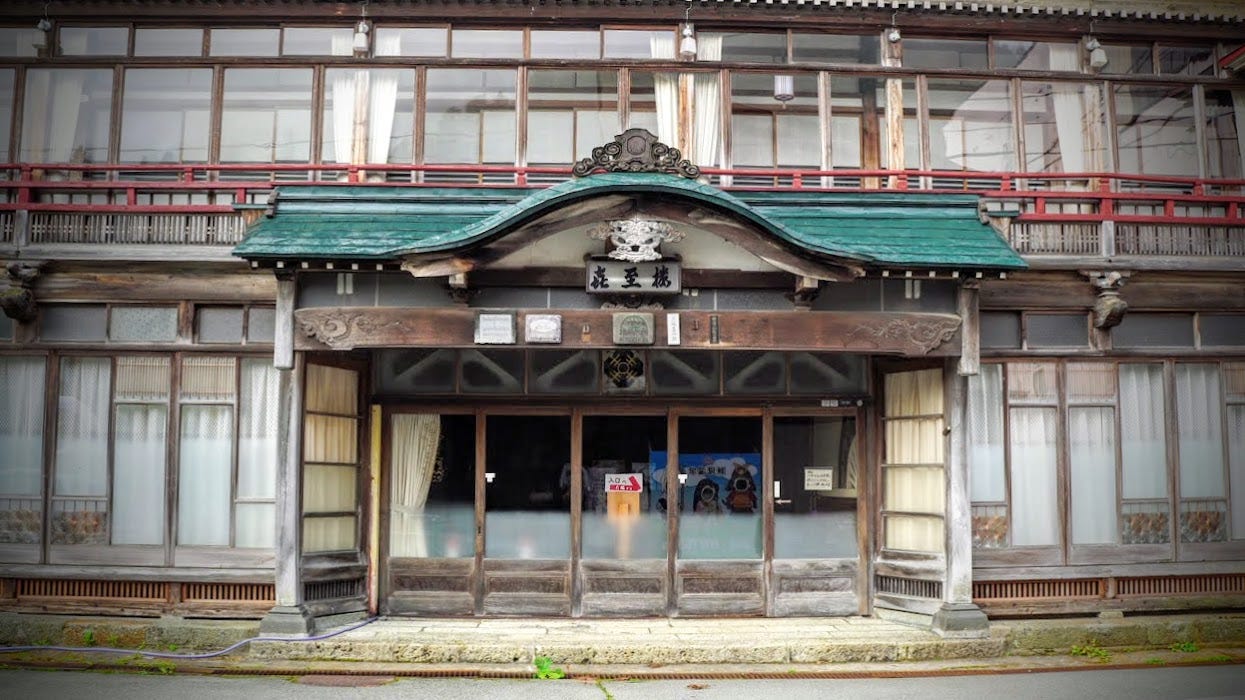
In 1945, proclaimed Japanese filmmaker Kurosawa Akira released The Men Who Tread on the Tiger’s Tail. This story is largely based on the 1840 Kabuki play Kanjincho (勧進帳, The Subscription List), itself based on the 15th-century Noh play Ataka. Kanjincho and Ataka tell the story of Yoshitsune, an extremely famous samurai and military commander.
But what does this have to do with Kamewari-yama?
The Miracle of Kamewari-yama
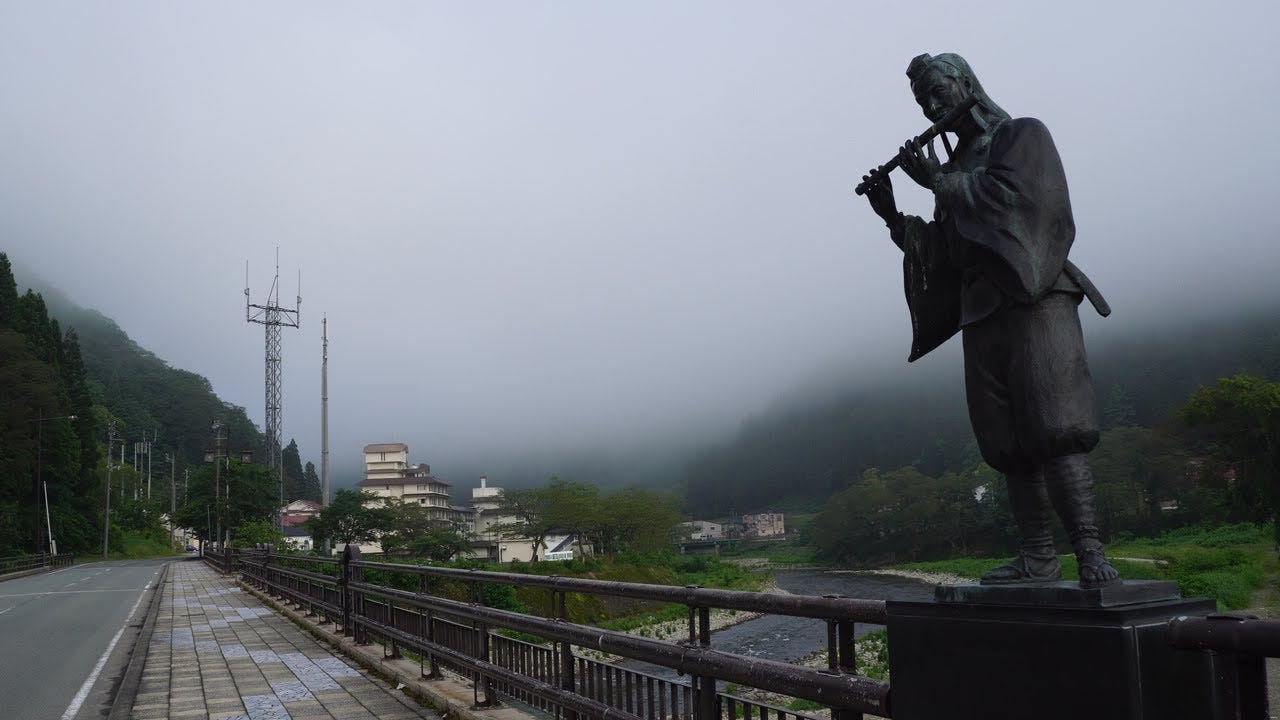
Well, legend has it that Yoshitsune and his group of 13 stopped at Kamewari-yama while escaping Yoshitsune’s older brother, Minamoto no Yoritomo. Headed for Hiraizumi in Oshu, current-day Iwate Prefecture, when the group reached the Kamewari Pass they found themselves caught in a storm. To make matters worse, Yoshitsune’s expectant wife Kita-no-kata’s waters suddenly began to break. There were no farmhouses nor townships nearby, so the group sought shelter under a nearby tree.
Unfortunately, Kita-no-kata was going in and out of consciousness. Yoshitsune regretted taking his wife on such an arduous journey, vowing to take his own life if his wife lost hers. Yoshitsune’s retainers said they had never seen the brave warrior so flustered, even during times of war.
Benkei to the Rescue
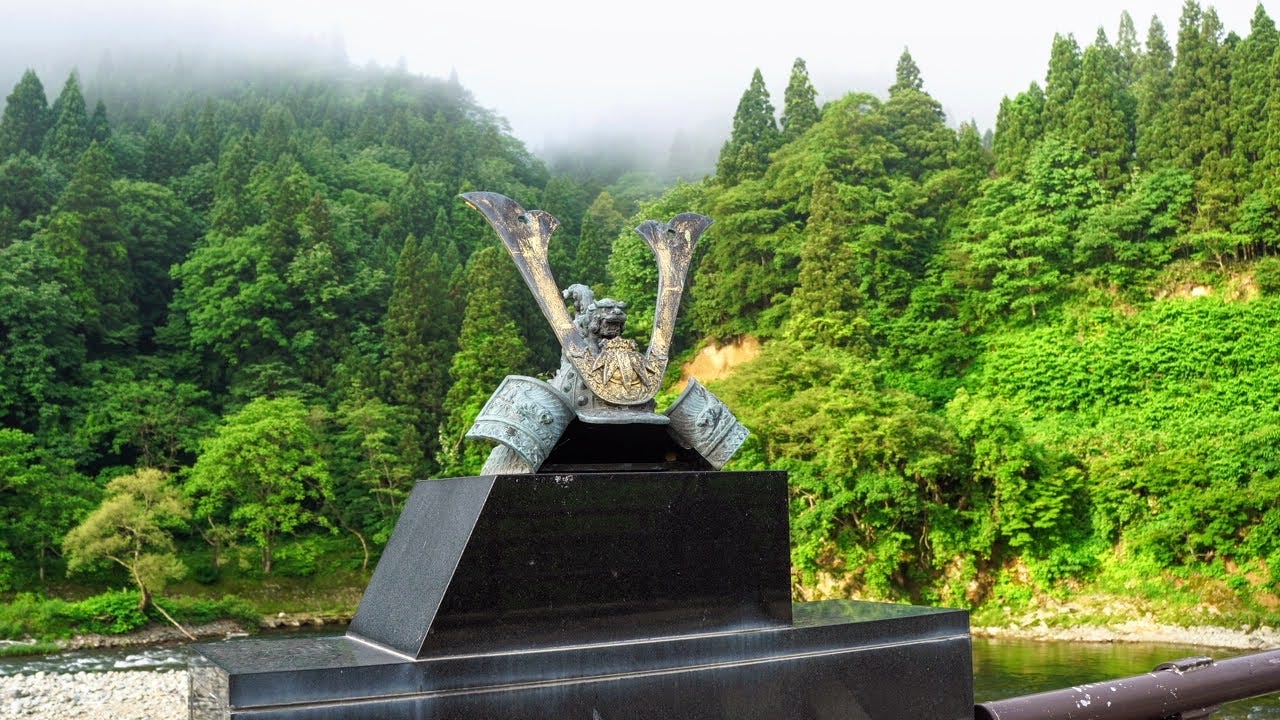
After a while, Yoshitsune’s wife woke up crying out for water. Quick as a flash one of the members of the group, Benkei, grabbed his flask and ran into the night in search of a stream or river.
Eventually Benkei found one, and legend has it that he took a long Naginata blade to a nearby rock, when suddenly a huge gush of hot water emerged like a rising white dragon. Surprised, Benkei filled up his flask to take some water back, but by then he was so far away he didn’t know the way back.
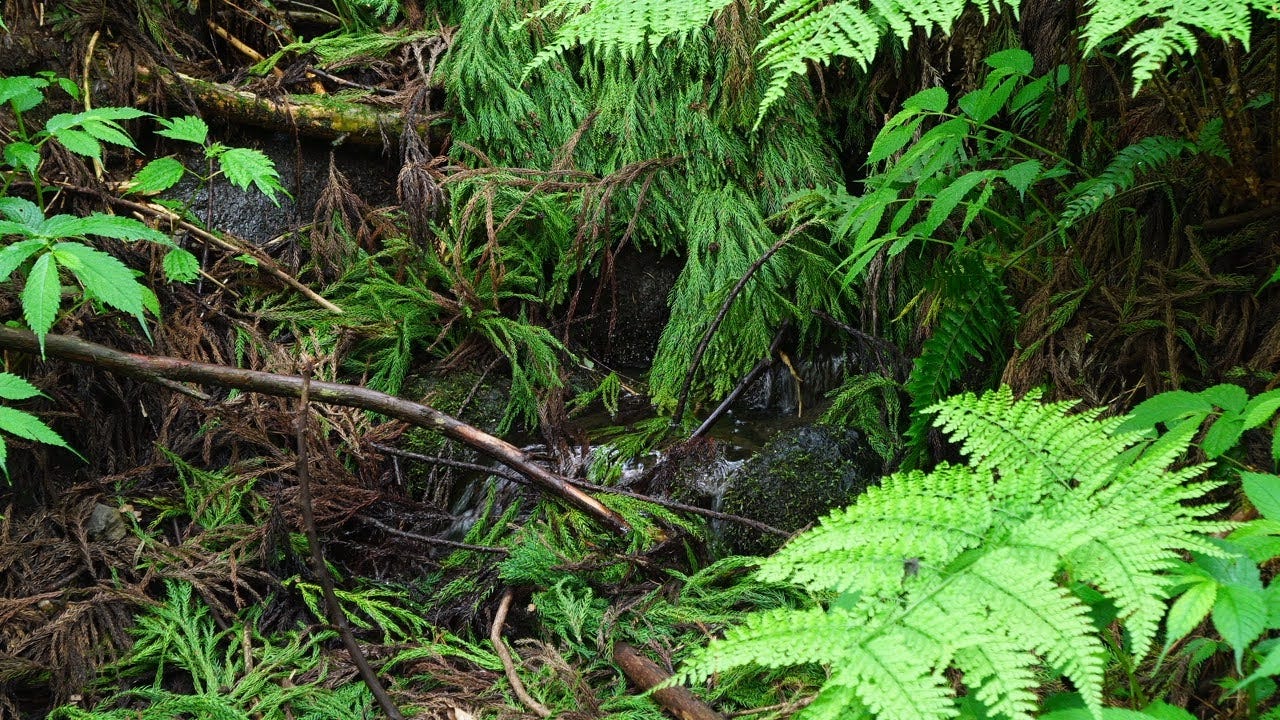
At first Benkei hesitated to sound his Horagai conch as this could unnecessarily alert anyone nearby and reveal the group’s whereabouts, but he thought better of it due to the severity of the situation.
Benkei’s Bad News
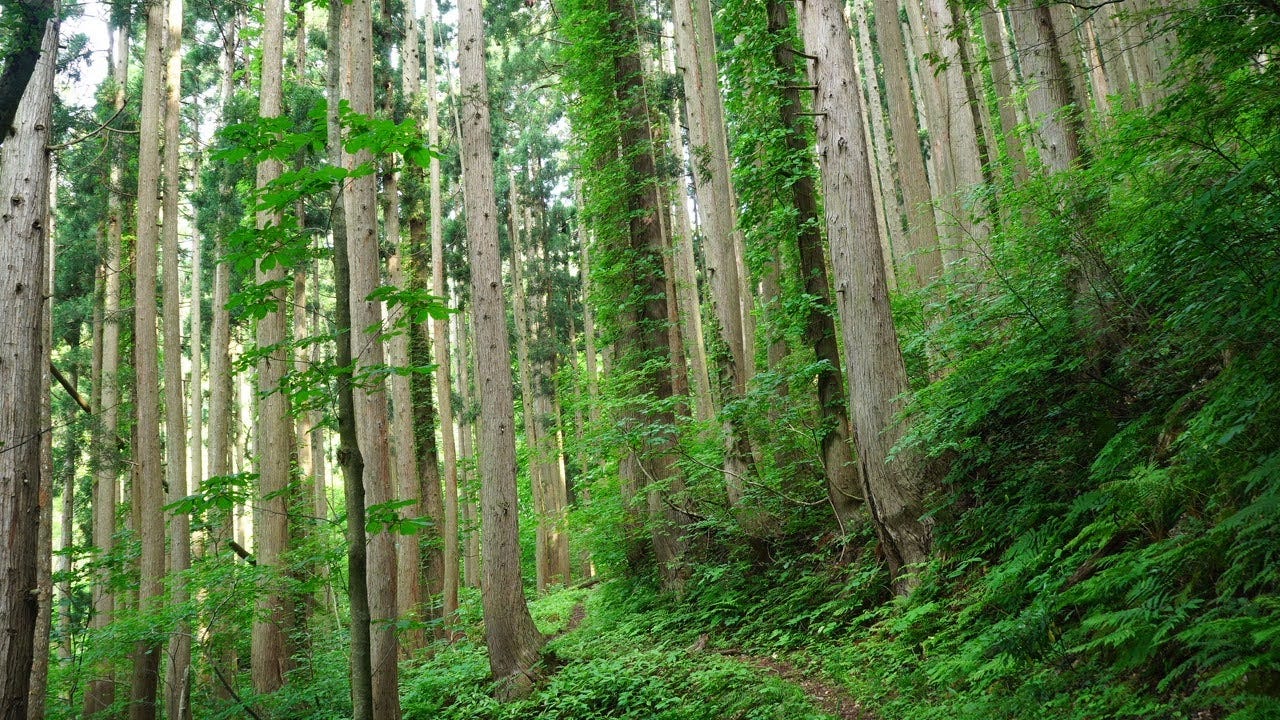
A conch sounded from the top of the mountain and Benkei was able to find his way back. However, when he got there he found everyone crying. A member of the group said, ‘You went all that way to get some water for Kita-no-kata, but it was all in vain. She has passed away’. Thinking he should have more strongly urged the group not to go ahead with such a dangerous mission, Benkei lamented, and as he did so, he poured some of the water in Kita-no-kata’s mouth.
Suddenly, Kita-no-kata’s body started to move slightly, so Benkei started reciting Buddhist chants. Then, a miracle happened. Kita-no-kata regained consciousness, and was able to safely deliver her baby. Yoshitsune’s son was named Kamewakamaru, which means ‘plump young turtle’.
Kamewari-yama’s Oku-no-in and Koyasu Kan’on: The Shrine of Safe Childbirth
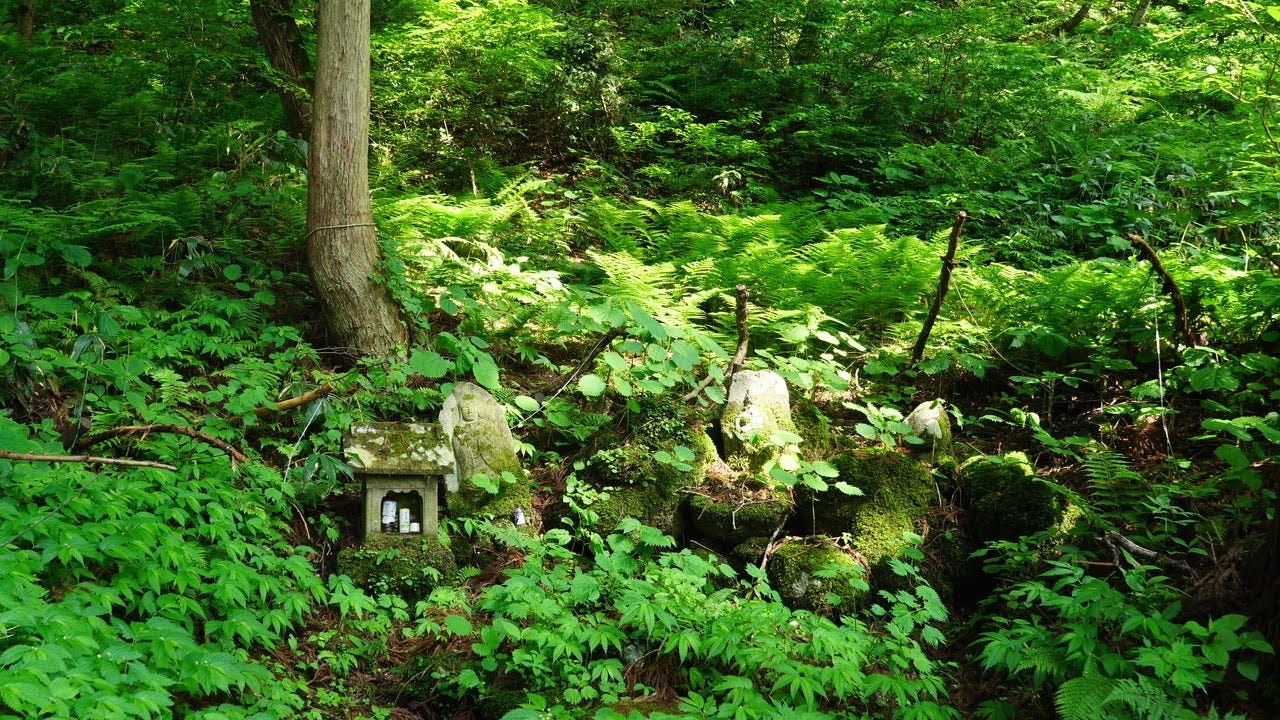
The area where Yoshitsune and Kita-no-kata’s baby was born is Kamewari-yama’s Oku-no-in, its inner sanctuary. In remembrance of the birth, Koyasu-kan’on shrine was established on the Semi Onsen side of Kamewari-yama. Koyasu means an ‘easy’ birth, and people who are expecting a child often pray here for safe delivery.
The legend of Benkei finding the hot water is also said to be the origin of Semi Onsen. Written as 瀬見, Semi means ‘finding the flowing water’, and there are many reminders of this legend all around the area. In addition, one of the main trails up Kamewari-yama, the Yasunba Trail, literally means ‘rest spot’, named after where the group is said to have taken a rest.
Praying to Kamewari-yama
So, if you ever find yourself pregnant, or simply wanting to pray for the health and safety of children, take the time to come to Koyasu Kan'on shrine, and remember the story of Kamewakamaru as you pray. And while you're at it, why not try out some of the amazing hot spring water on offer at Semi Onsen. You won't regret it.
My Guide to Hiking Kamewari-yama

There are three main trails up Kamewari-yama; the Semi Onsen Trail, the Yasunba Trail, and the Nagao Trail. I opted for the Semi Onsen Trail as it was the easiest for me to get to, I felt it would be the most eventful, and I knew that there would be a foot spa at the end (although it was too hot for me!).
Semi Onsen Trail (90 minutes one way)

The Semi Onsen Trail starts at the public carpark near Semi Onsen. From the nearby Yoshitsune Bridge you can catch a glimpse of Kamewari-yama and many other surrounding mountains. First, take a walk all the way through Semi Onsen by simply following the main road, and then take a right to go over the red bridge.
From here, take a left, and before long you will come across the Koyasu Kan’on Shrine just before you get to the Benkei Bridge. Pay your respects at the shrine, and to the left of the shrine you will find a grass bank to walk along. Soon you will see that the path goes under the concrete roof where there is a train track. Be careful of trains as you cross here, and soon you will find yourself in the middle of a deep forest.
The Forests of Kamewari-yama
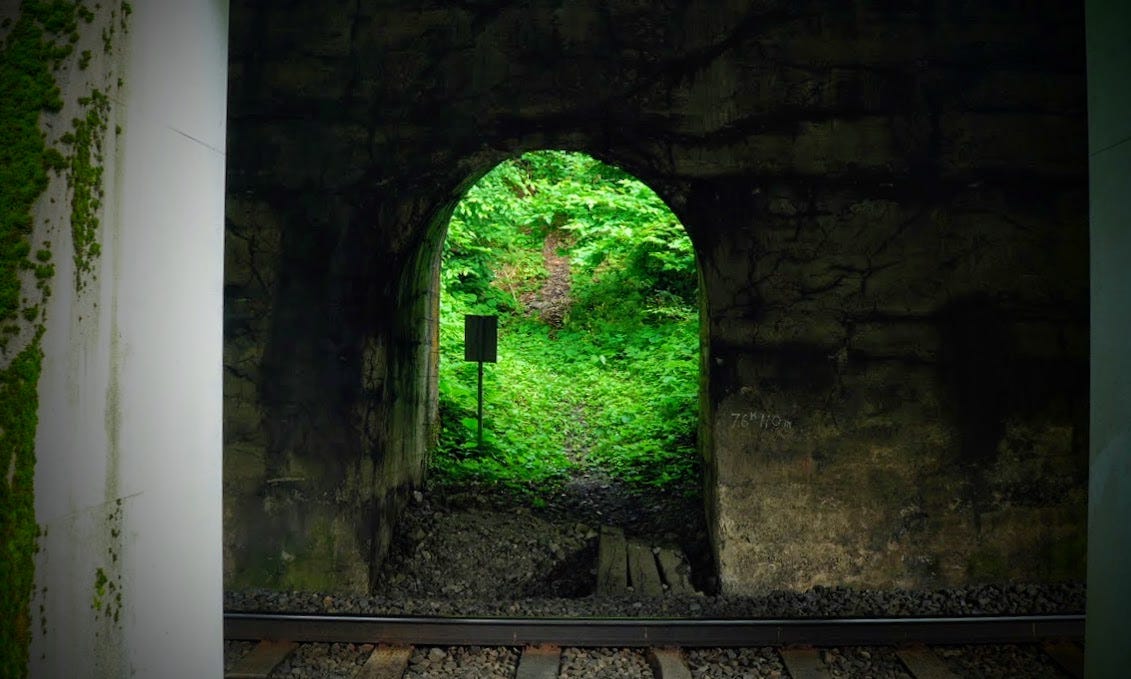
Simply keep following the trail up through the forest. There are a lot of hairpin turns, but eventually you’ll find yourself at the Okuno’in, a clearing where there are a number of memorial stones. Legend has it that this is where Yoshitsune’s son Kamewakamaru was born.
Reaching The Summit of Kamewari-yama

This clearing is quite spread-out, so is the perfect spot for a rest. From here it’s only 30 to 40 minutes through a beech forest to the summit. There is no path to the true summit as it is in the middle of thick bush, but there is a lookout to the south-east from where you can see Semi Onsen and the Nagasawa area of Funagata Town.

Walk in the direction of the power lines from this area and there is a small hill that is the de-facto summit of Kamewari-yama. From here there are 360° views of Chokai-zan, Gassan, Hayama (Murayama), Mokuzo-yama and Hachimori-yama from the Kamuro Renpo (Kamuro Alps), Kamuro-dake. Then it is just a matter of retracing your steps back to the carpark. Along the way there is a foot spa that you can enjoy for free, although it was too hot for me!
Yasunba Trail (90 minutes one way)

The Yasunba Trail starts in the Yasunba area of Shinjo City, about 1.8km east on the farm roads. There is a carpark about 150m north of the trailhead and off to the right. The trail starts out very wide, yet it is very steep. Before long there is an open area that meets the Semi Onsen trail.
The road on the way there is unsealed. Many large trucks use this road, and there may be rocks to watch out for, so low vehicles need to take particular care. Bear in mind that there is no toilet at this trailhead.
Nagao Trail (2 hours one way)
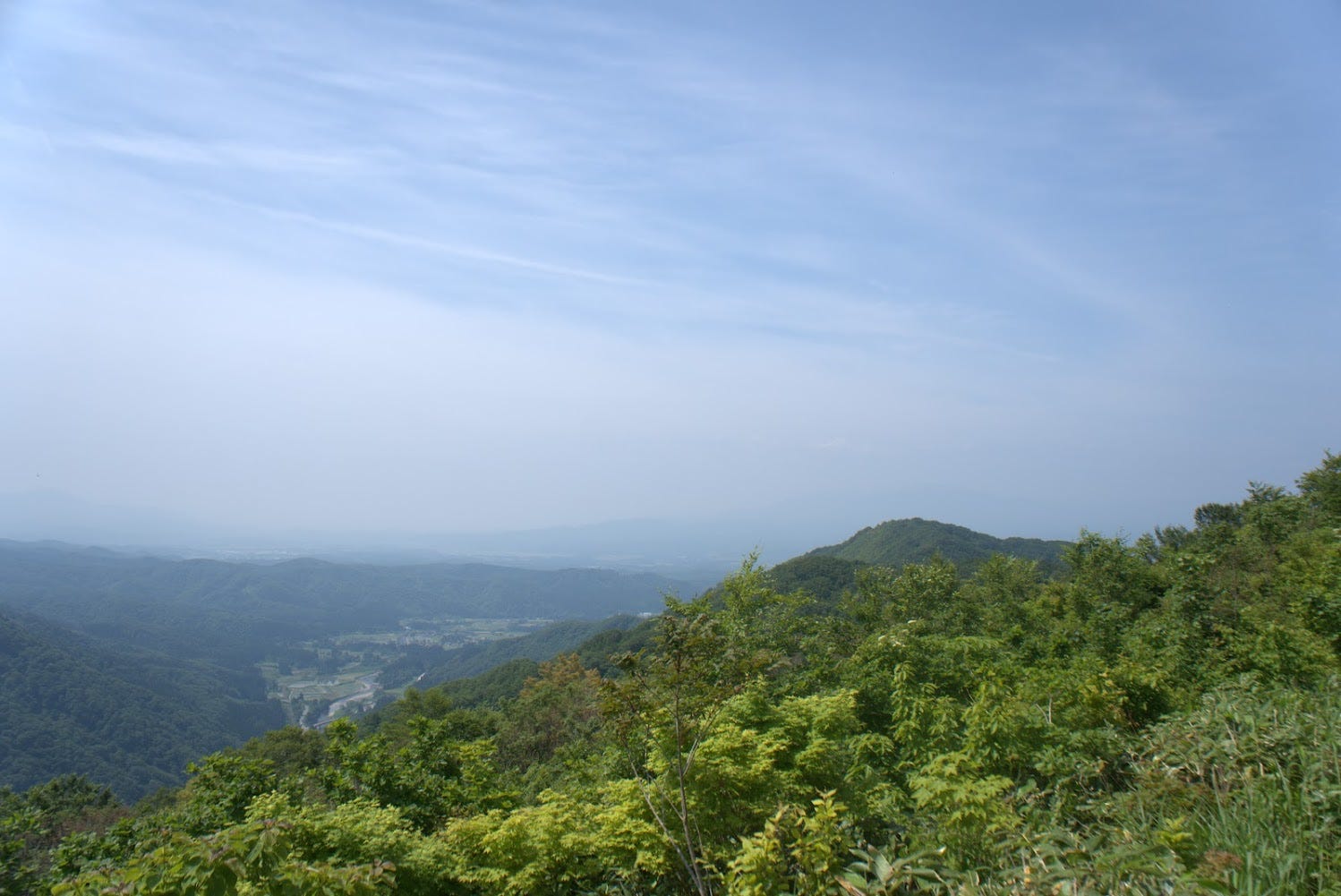
The Nagao trailhead is located near the intersection between the Arasawa forest road and the road that heads towards the shooting range to the north-west of the Nagao tunnel. At the end of the road there is a spot to park your car.
The trail starts off very wide through a cedar forest that gradually changes into a beech forest. There is a peak at 603m of elevation from where the path heads to the east along a ridge. There is a lookout along the way that faces the south east from where you can see Kamuro-dake, the Zao Alps, Murayama Hayama, Gassan, and the Ide Alps in the distance. Keep following the path and you will come across the Yasunba Trail. Overall the trail is a very slight incline.
Nearby locations worth checking out
Shinjo City
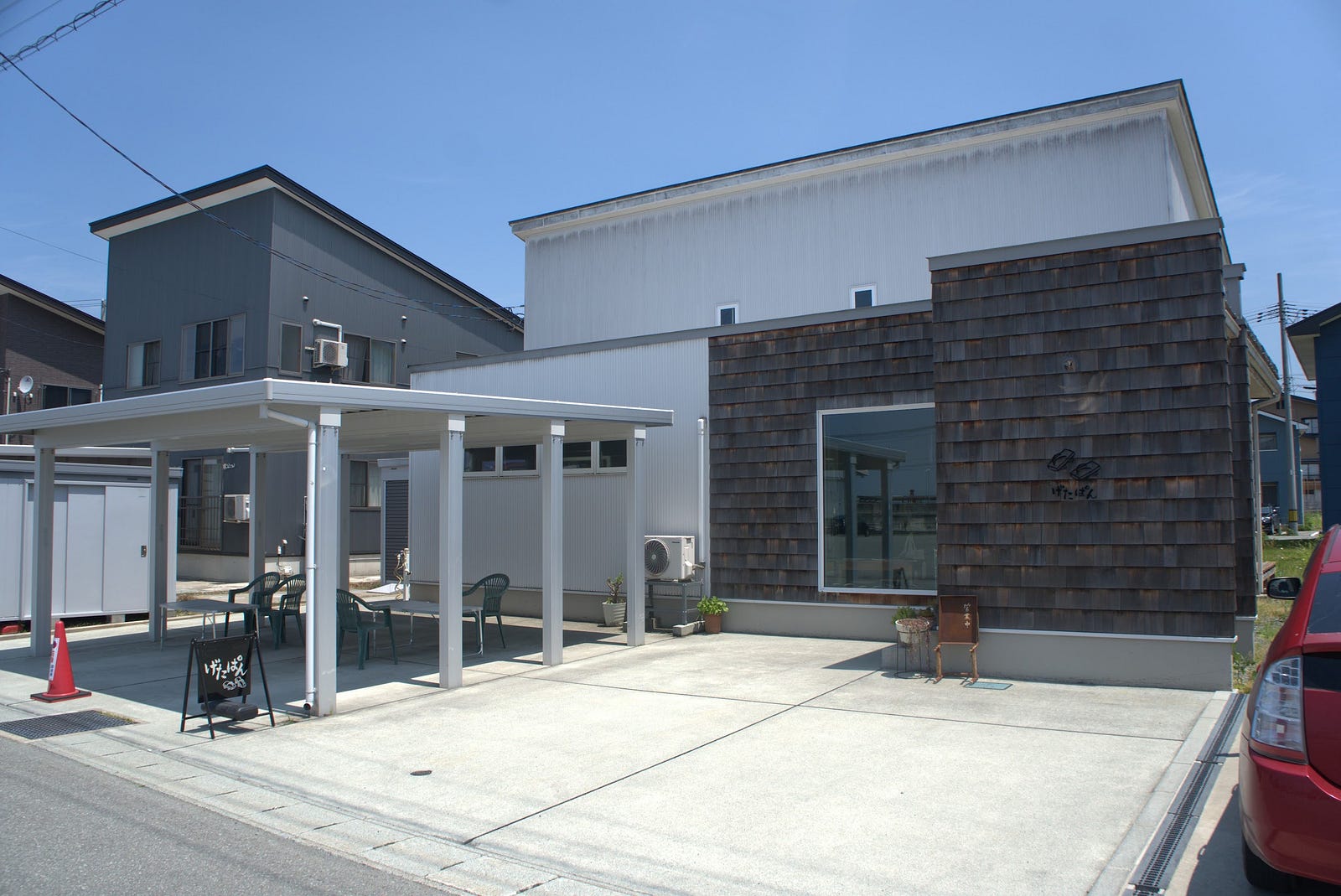
Sakegawa Village is located adjacent to Shinjo City, and is a short 15 minute drive to the station. Shinjo City is famous for its three-day festival in August, featuring huge floats and large dances that are free to watch. It is also home to one of my absolute favourite bakeries, Geta Pan (Facebook), that I intentionally go to sometimes even though it is an hour drive away.
River Cruise on the Mogami
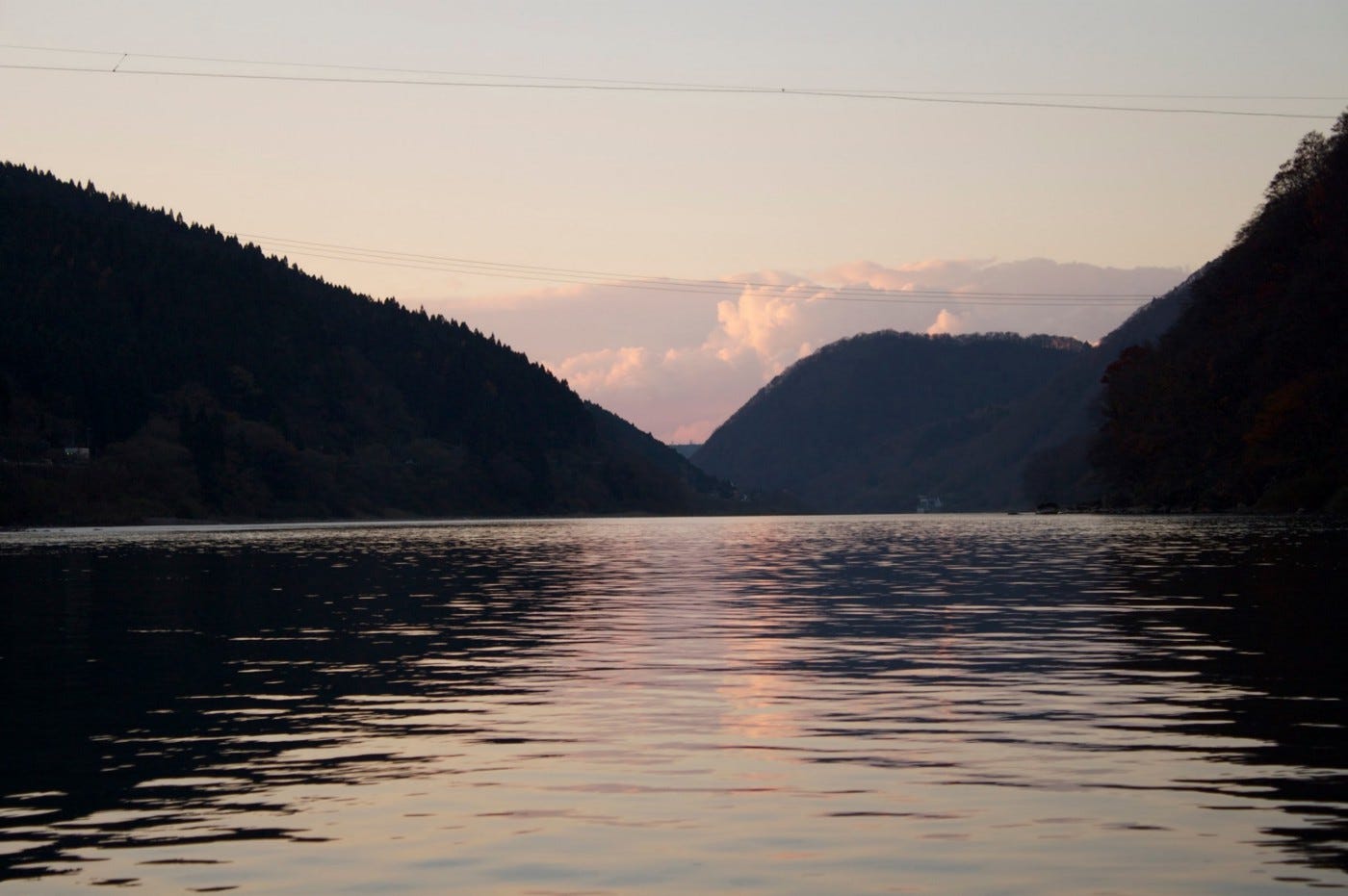
The nearby Mogami River that runs the length of Yamagata is the longest contiguous river in one prefecture and featured prominently in Matsuo Basho’s The Narrow Road to the Deep North. Matsuo Basho and his trusty partner Kawai Sore stayed three days in Oishida, and once they had good weather, they travelled to the Dewa Sanzan. This river voyage inspired the following haiku:
Gathering the rains
Of summer, how swift she flows
Mogami River
Matsuo Basho
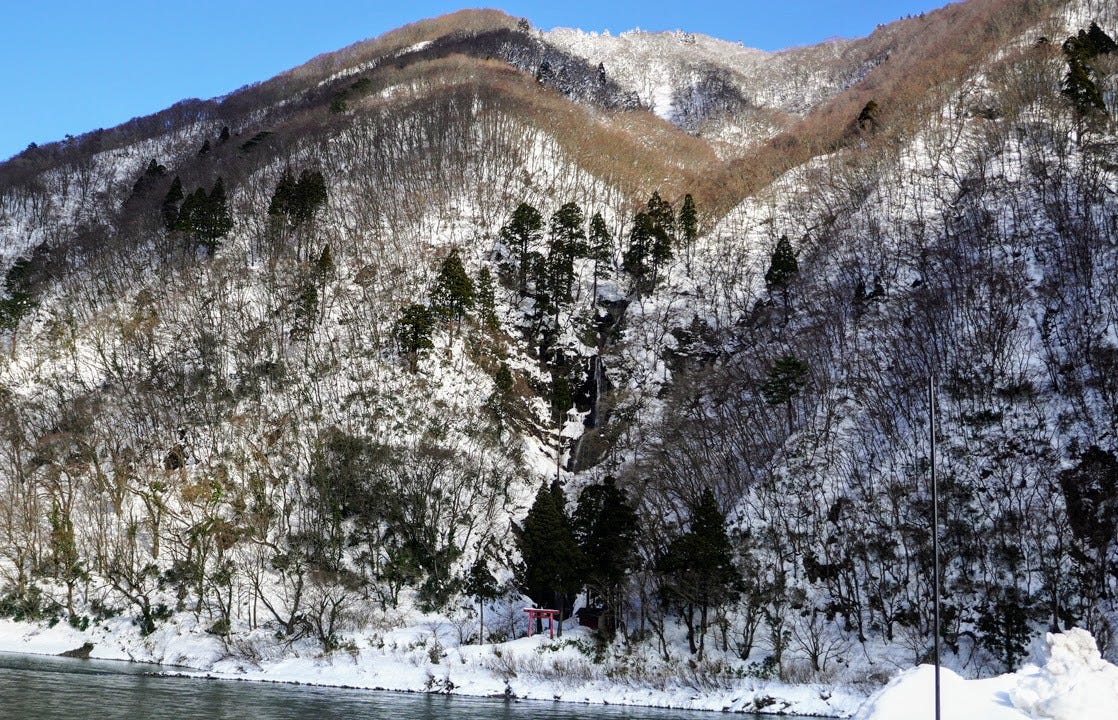
Many companies offer cruises along the Mogami River, including during the cold winter months when you can sit under a heated Kotatsu and sip Amazake, a sweetened sake lees drink (the extract from making sake that is non-alcoholic).
The ‘Beauty’ Hot Spring of Hanesawa Onsen

Hanesawa Onsen is located in the south west of Sakegawa Village. The hot spring was discovered by accident in 1919 when they were searching for oil. Yamagata Prefecture is famous for having an Onsen (hot spring) facility in each of its 35 municipalities. Among these, Hanesawa Onsen is rare in that it derives from a geyser, and this means it has a slightly alkaline ph value of 8.4 which is great for your skin.
The quality of the hot water has lead to Hanesawa Onsen becoming Nihon Sandai Bijin no Yu, or in the ‘top three onsen for beautiful people’ in Japan. The concentration is up there with that of Yunokawa Onsen in Shimane Prefecture, and the quality of the spring water is great for your skin, leaving it silky smooth.
In Hanesawa Onsen there are three Onsen Ryokan (traditional inns) locals have enjoyed since long, long ago. There is also a public bathing facility in the town.
Japanese Link for Hanesawa Onsen
The Totoro Trees
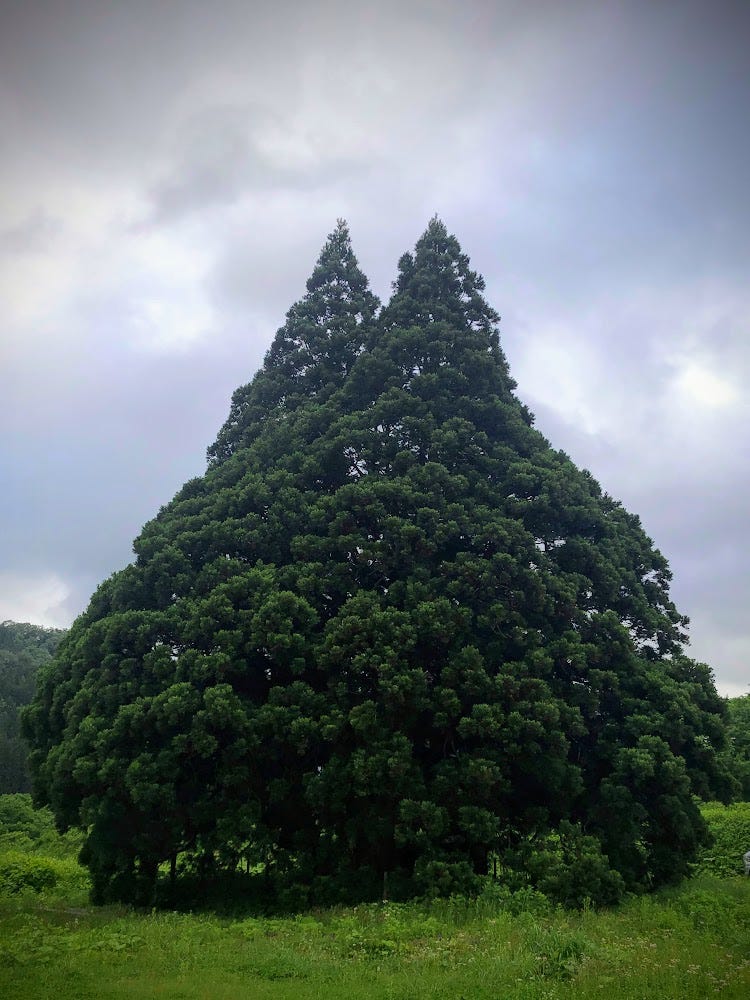
With places like Ginzan Onsen and Genso-no-Mori, the forest of illusions, Yamagata Prefecture is full of places similar to those depicted in Ghibli films, or in this case, two trees that resemble the famous character Totoro.
Genso no Mori: The Forest of Illusions near Tsuchiyu-yama in Tozawa Village
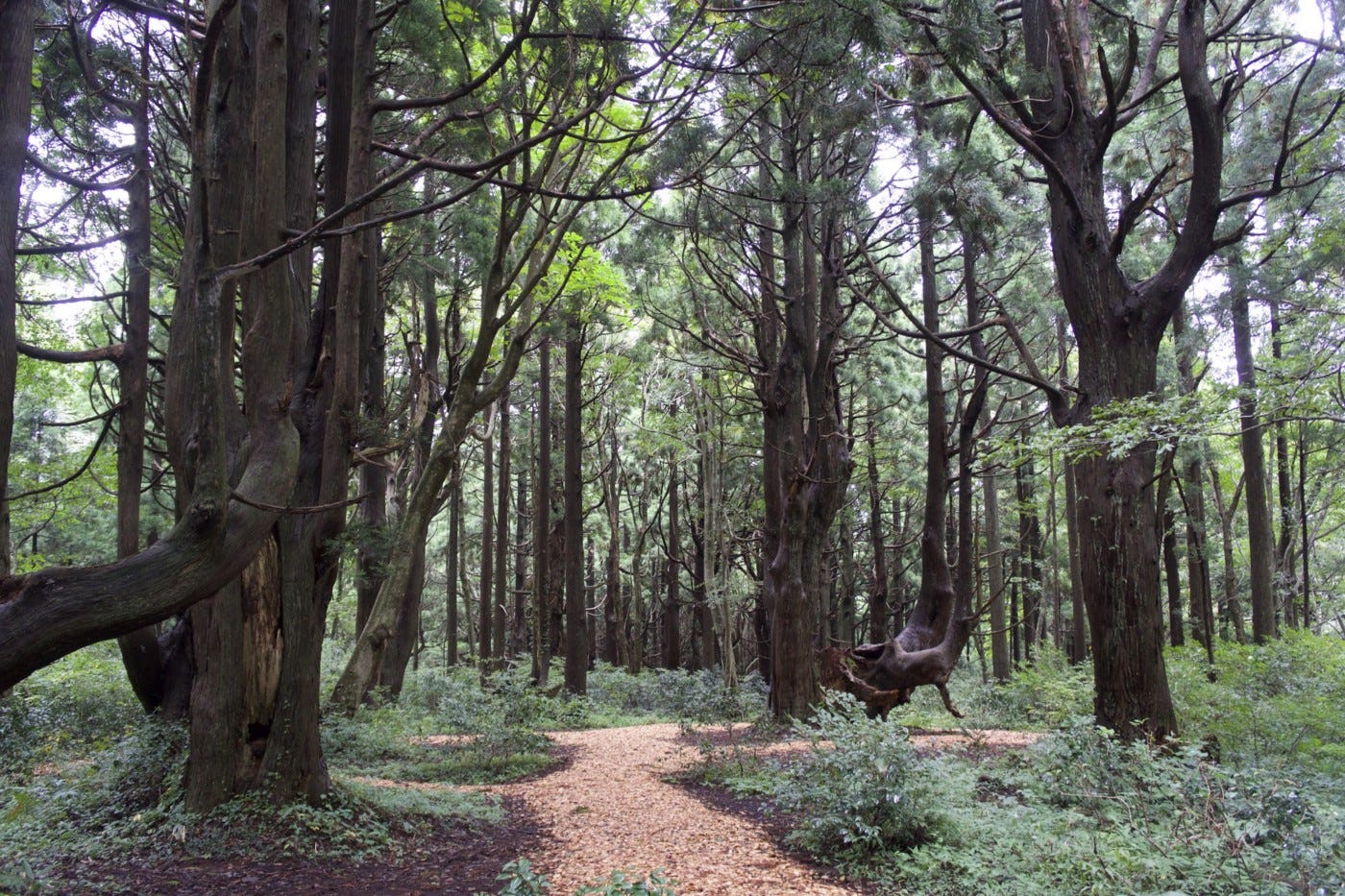
Genso no Mori, the phantom forest or forest of illusions, is a naturally occurring cedar forest covered in cedars that have morphed due to the snowfall in the region. Be warned the forest is a bit tough to get to. You have to take a sharp turn into the mountains from Route 47 along the Mogami River, and then drive up a gravel road for a while, but once you’re there it really is like being in another world.
Yozo-san: White Snakes, White Monkeys and slimy salamanders

Yozo-san is an epic hike along an ancient mountain pass of primeval beech forests, unstoppable views, mysterious swamps, massive gorges complete with breathtaking waterfalls and snow bridges, all with a legendary history.
Taizo-san: The Epitome of Autumn Leaves in north Japan
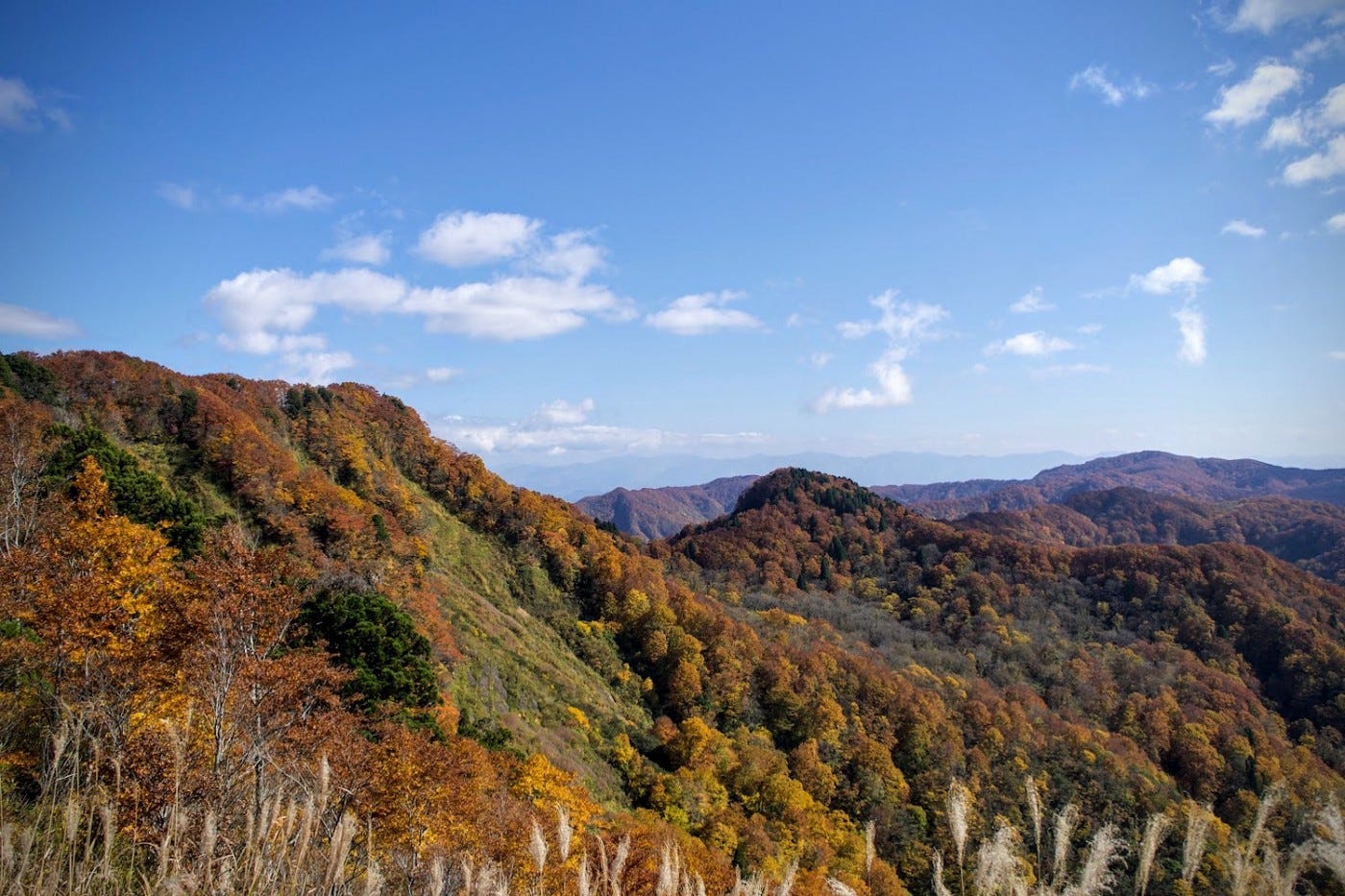
Taizo-san is one of the historic routes linking The Shonai and Mogami Regions of Yamagata Prefecture, and is by far one of the best spots in Tohoku, North Japan, to take in the autumn leaves.
Yonetaihei-zan

Located just to the east of Yozo-san, Yonetaihei-zan is known for its marsh, the Yone Marsh. I visited Yonetaihei-zan in winter so didn’t get to explore the marsh, but it wouldn’t be too far of a detour at all. Yonetaihei-zan is a 30min climb to the summit too, so it would be easy to do both of these mountains in the same day (weather and season permitting).
After climbing Yozo-san, I learned that one of the guides is from Yone, and organised to interview him sometime in the future.
Yamuki-yama

Yamuki-yama is a low lying peak on the banks with a huge history as a strategic location for the medieval Yamuki castle for The Mogami Clan, and for the burgeoning trade along the Mogami River that helped lead Edo, modern-day Tokyo, to its status as a global city.
Kamewari-yama in Mogami Mura | 亀割山| かめわりやま
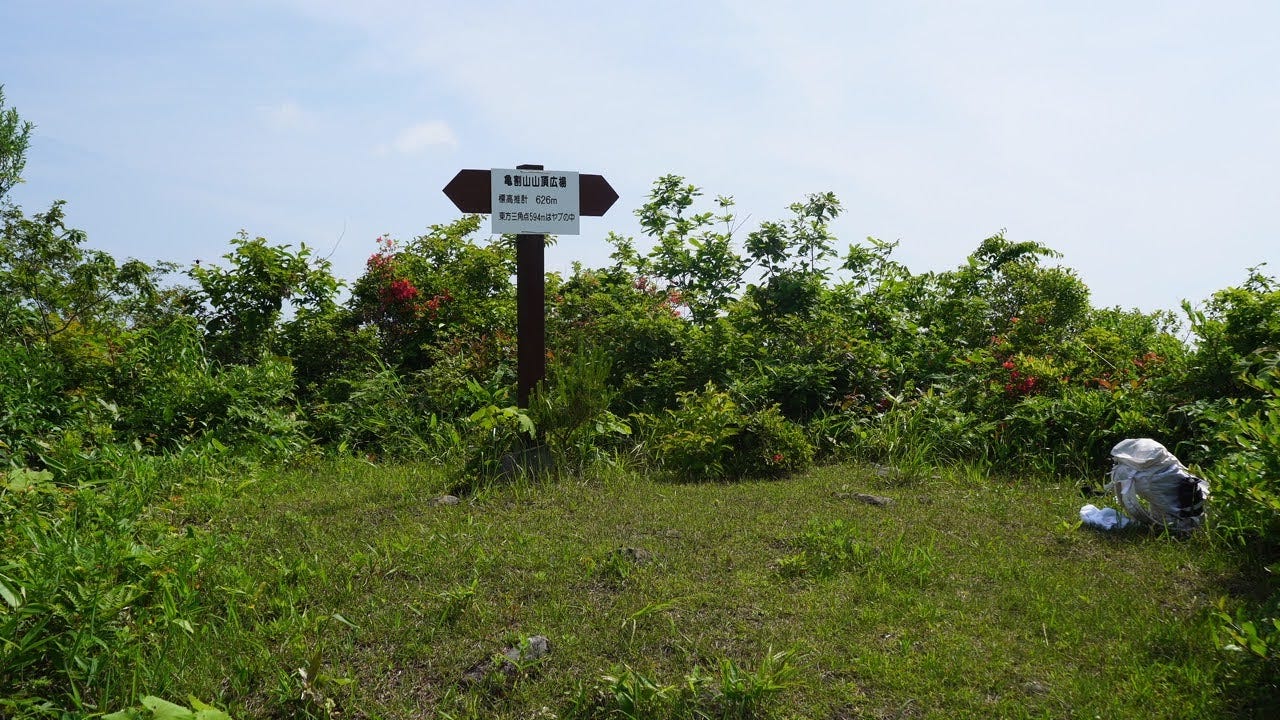
References
Yamap (Japanese with my notes in English)
Yamagatayama.com (Japanese)
亀割山(山形県新庄市)
亀割山と「義経記」:…www.dewatabi.com
義経・弁慶伝説 ~亀割・瀬見~ - 最上地域観光協議会
山形県最上地域の観光ウェブサイトです。kanko-mogami.jp
KAMEWARI-YAMA
亀割山 | かめわりやま
Mt. Kamewari, Kamewariyama
Kamewari-yama (亀割山かめわりやま) is a 594m (1948 ft.) peak in the Mogami region of Yamagata prefecture best climbed from June to October. Kamewari-yama is a level 1 in terms of physical demand, which means it is easy to hike, has an A technical grade, which means it requires little expertise, and you want to allow at least 1.5 hours one-way for a hike.
Mountain Range
Kamewari-yama
Region
Mogami
Elevation
594m (1948 ft.)
Technical Demand
A (requires little expertise)
Physical Demand
1 (easiest)
Trails
Three 1) Semi Onsen Trail (1.5 hours one-way), 2) Yasunba Trail (1.5 hours one-way), 3) Nagao Trail (2 hours one-way)
Best time to climb
June to October
Day trip possible?
Yes
Minimum Time Required
1.5 hours one-way on the Semi Onsen or Yasunba Trails
PDF Maps by TheHokkaidoCartographer and JapanWilds.org. See all here.
100 Mountains of Yamagata, abandoned buildings and ruins, Ancient paths and trails, Buddhist Temples and Shinto Shrines, Favourites, Forest Bathing, Half-day hikes, Hard to reach, Historical Hikes, Mogami Region, Mogami Town, Mountains below 1000m, Myths and Legends, Onsen Hot Springs, Water Springs
YAMABUSHI NEWSLETTER





